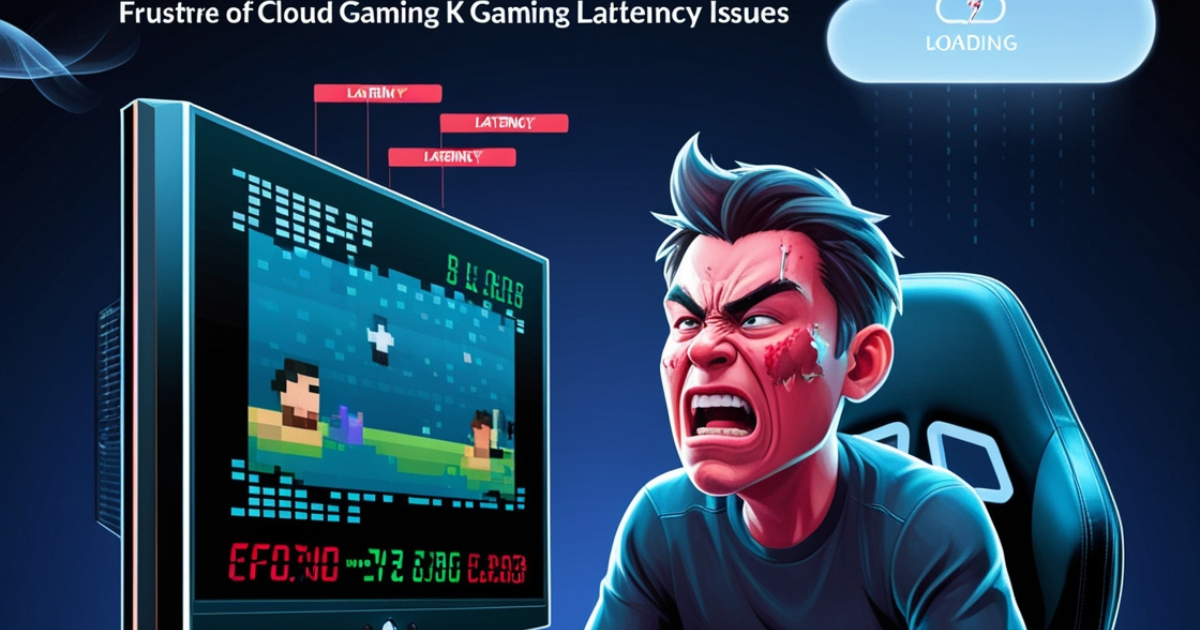Table of Contents
Cloud Gaming Latency Issues: Why Your Gameplay Feels Laggy & How to Fix It
Opening
“There’s nothing more frustrating than being in the middle of an intense gaming session, only for your character to freeze at the worst possible moment. You press a button, but the action happens a second too late—just enough to get you killed. If this sounds familiar, you’re not alone. Cloud gaming latency issues are the silent killers of smooth gameplay, turning what should be an immersive experience into a laggy nightmare. But why does this happen, and more importantly, how can you fix it?”
What Is Cloud Gaming Latency?
- Definition: The delay between your input (button press) and the action appearing on-screen.
- Why it matters: Even a 100ms delay can ruin competitive gaming.
- Key factors affecting latency:
- Internet speed
- Server distance
- Hardware performance
Common Causes of Cloud Gaming Latency Issues
1. Internet Connection Problems
- Bandwidth limitations – Cloud gaming requires at least 15-25 Mbps for smooth performance.
- Network congestion – Too many devices on the same network can slow things down.
- Wi-Fi vs. Ethernet – Wireless connections introduce extra latency.
2. Server Distance & Infrastructure
- The farther you are from the cloud server, the higher the latency.
- Some cloud gaming services (GeForce Now, Xbox Cloud Gaming) have limited server locations.
3. Hardware & Software Bottlenecks
- Device performance – Older devices may struggle with decoding video streams.
- Background apps – Running other programs can hog resources.
How to Reduce Cloud Gaming Latency
1. Optimize Your Internet Connection
- Use a wired Ethernet connection (lower latency than Wi-Fi).
- Upgrade your plan – Aim for at least 50 Mbps for 4K streaming.
- Enable QoS (Quality of Service) on your router to prioritize gaming traffic.
2. Choose the Right Cloud Gaming Service
| Service | Average Latency | Best For |
|---|---|---|
| GeForce Now | 30-50ms | High-end PC gaming |
| Xbox Cloud Gaming | 50-80ms | Console-like experience |
| PlayStation Now | 60-100ms | PlayStation exclusives |
3. Adjust In-Game Settings
- Lower resolution (1080p instead of 4K).
- Disable unnecessary background effects.
- Use performance mode if available.
Advanced Fixes for Serious Gamers
- Use a VPN with gaming-optimized servers (can sometimes reduce routing delays).
- Upgrade your router (look for low-latency gaming modes).
- Monitor your network with tools like PingPlotter to identify bottlenecks.
Conclusion
Cloud gaming latency issues can be frustrating, but they’re not unbeatable. By optimizing your internet, choosing the right service, and tweaking settings, you can minimize lag and enjoy smoother gameplay. The future of cloud gaming is bright—with 5G and better infrastructure, latency will only improve. Until then, take control of what you can and game on!
FAQ: Cloud Gaming Latency Issues
1. What is an acceptable latency for cloud gaming?
- Under 50ms is ideal, but up to 100ms is playable for casual games.
2. Does 5G reduce cloud gaming latency?
- Yes, 5G can lower latency to 20-30ms in optimal conditions.
3. Can I use cloud gaming on a slow internet connection?
- Not recommended—below 15 Mbps will result in noticeable lag and compression artifacts.
4. Why is my cloud gaming still laggy with good internet?
- Check for background downloads, router issues, or server distance.
5. Will cloud gaming ever be as responsive as local gaming?
- With advancements in edge computing and 5G, it’s getting closer, but local hardware will always have the edge in responsiveness.

